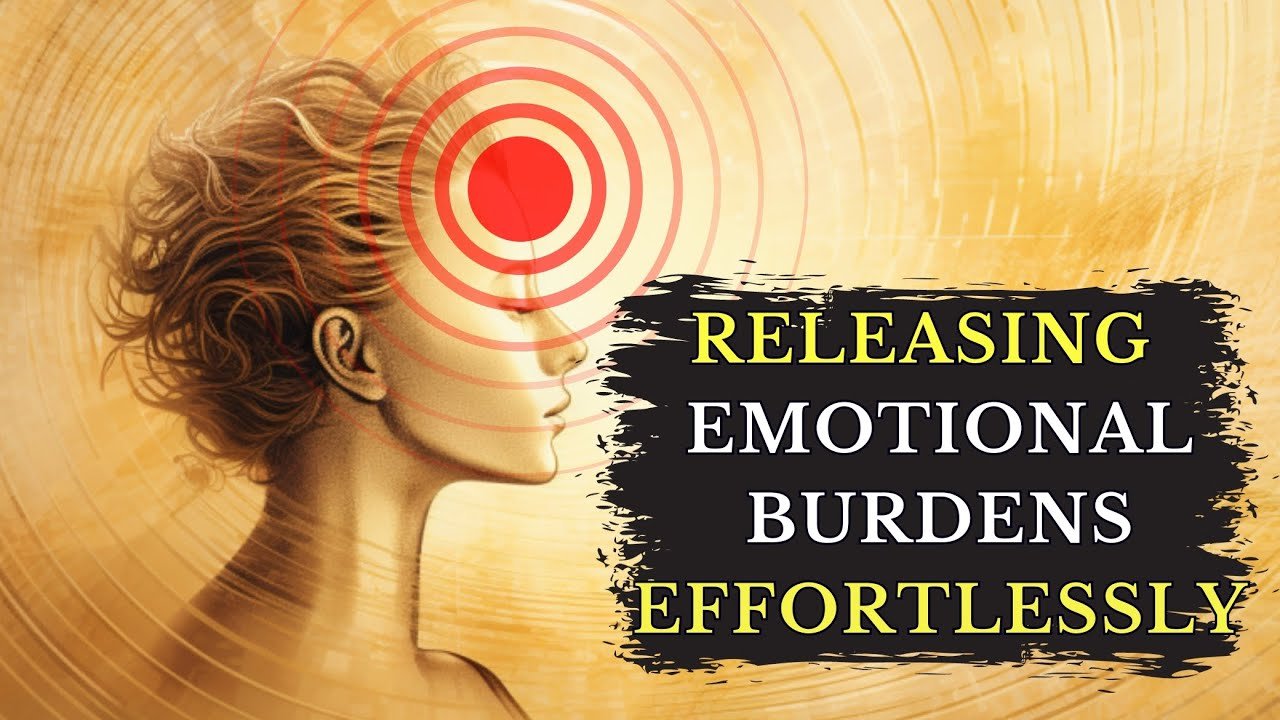In your journey to understanding emotions, it’s important to realize that they are vital to your survival, acting as responses to both inside and outside stimuli. Emotions aren’t just positive or negative; instead, they are necessary and adaptive, ensuring your well-being by navigating life’s ups and downs. However, when emotions aren’t properly expressed or processed—often because of inadequate emotional education or societal rejection—they can become trapped, leading to physical symptoms like tension or digestive issues. By recognizing the importance of your emotions, you can start seeing them as messengers that help maintain balance in your life.
The connection between your emotions and body is profound, as trapped emotions can significantly impact your physical health. Negative emotions and unresolved feelings might weaken cells, making you more susceptible to illnesses. Importantly, intense experiences or trauma might prevent you from processing emotions, causing them to become encapsulated within your body. To achieve healing, it involves understanding where emotions manifest physically and expressing them through activities such as meditation or dance. With ongoing practice of emotional awareness and embodiment, you can improve your emotional well-being, ensuring a healthier relationship with yourself.
Understanding Emotions
Emotions play a crucial role in how you adapt and survive in the world. Far from being simply fleeting feelings, emotions serve as dynamic responses to both internal and external stimuli. They allow your body and mind to maintain balance and adapt to ever-changing environments. When you experience an emotion, it brings with it a unique message tailored to the current situation, ensuring your well-being and survival. It’s vital to understand that emotions aren’t inherently positive or negative; rather, they are essential and adaptive. In a world where emotional education is often lacking, acknowledging and processing your emotions can enhance your ability to connect with yourself and others.
Emotions as Adaptive Responses
Think of emotions as a finely-tuned alarm system, alerting you to changes within and around you. They help you adjust your behavior in response to different situations, creating a framework for survival and personal development. For instance, fear might alert you to potential threats, while joy can encourage you to engage in social and bonding activities. These responses are deeply rooted in your biology, guiding your actions to protect and nurture yourself. The adaptability of emotions extends beyond basic survival as they shape your identity and influence how you perceive the world.
Emotions in Relation to Internal and External Stimuli
Internally, emotions act as a reflection of your thoughts and physiological states. They tell you about your well-being, encouraging introspection and self-regulation. When something triggers an internal response, such as hunger or fatigue, emotions like irritability or contentment manifest to nudge you towards resource optimization or rest. Externally, emotions coordinate your interactions with the world and others; they allow you to navigate complex social landscapes, expressing needs, and aligning with or opposing external circumstances. Whether it’s a soft breeze positively influencing your mood or a harsh word causing upset, emotions are your navigational tools.
Beyond Positive and Negative: The Necessity of Emotions
It’s easy to categorize emotions as pleasant or unpleasant, but this oversimplification can lead to misunderstanding. All emotions serve a purpose and therefore hold value regardless of their immediate impact on comfort. The unpleasant ones, such as sadness or anger, can drive change by highlighting dissatisfaction or injustice. The pleasant emotions, like love and happiness, can bolster social bonds and affirm well-being. Recognizing the necessity of all emotional experiences can empower you to embrace emotional complexity as a natural and beneficial part of life.
The Phenomenon of Trapped Emotions
Trapped emotions become a concern when they aren’t allowed to fulfill their function. Without proper avenues for expression, emotions can become encapsulated within the body, creating lasting impacts. This phenomenon often occurs when emotions are ignored or dismissed, leading to a backlog of unprocessed experiences that can weigh heavily on mental and physical health.
Consequences of Unprocessed Emotions
When emotions are unprocessed, they can manifest in ways that impact your overall well-being. Unresolved emotions may morph into stress, anxiety, or depression, creating a continuous cycle of emotional turmoil that disrupts everyday life. These emotions can block personal growth and lead to recurring patterns of negative thought and behavior, making it difficult to respond adaptively in the future.
Societal Influence on Emotional Repression
Society often promotes emotional repression by discouraging the open expression of certain emotions. Cultural norms may label vulnerability as weakness or condition you to suppress anger and sadness as inappropriate, especially in public or professional settings. This societal pressure can hinder your emotional intelligence, making it challenging to embrace your emotional experiences fully.
Physical Manifestations of Trapped Emotions
Your body doesn’t forget unprocessed emotions. These emotions can manifest physically as chronic tension, headaches, or digestive issues. The link between trapped emotions and somatic symptoms is well-documented, demonstrating how unresolved feelings can somatically burden your physical health. Understanding this connection is vital in alleviating physical discomfort and emotional backlog.

This image is property of i.ytimg.com.
Connection Between Emotions and the Body
The marriage between emotions and the body is both intricate and profound. Emotions trigger tangible physical changes and are stored within the body’s memory. This connection highlights the importance of acknowledging and processing emotions to prevent health complications.
Physical Changes Instigated by Emotions
Emotions trigger physiological responses, such as increased heart rate or adrenaline rushes in times of stress. When you feel fear, your body prepares for a fight or flight response, channeling resources towards survival. Similarly, happiness can release endorphins that promote relaxation and well-being. These changes exemplify how emotions can shape your physical state.
Memory Retention of Emotions in the Body
Your body holds onto emotional experiences as memories which can influence current behavior and health. These memories inform how you react to similar situations in the future, often unconsciously. When left unresolved, negative emotional memories can perpetuate cycles of stress or anxiety, manifesting physically through muscular tension or digestive issues.
Long-Term Health Implications of Unresolved Emotions
Ignoring emotional health can contribute to long-term physical issues, including increased vulnerability to illness. Chronic stress from unresolved emotions can weaken your immune system, increase fatigue, and strain cardiovascular function. Recognizing these potential impacts underscores the importance of addressing emotional health as part of a holistic well-being strategy.
Influence of Emotions on Cellular Health
The connection between thoughts, emotions, and cellular health is extraordinary. Thoughts, imbued with emotional content, can wield significant influence over your physical health.
Impact of Thoughts on Physical Well-Being
Thoughts filled with emotions have the ability to transcend the mental realm and affect cellular health. Positive thoughts and emotions can reinforce cellular strength, vitality, and overall well-being. Conversely, negative emotions and chronic stress can weaken cellular function and open paths for disease development. This connection emphasizes the potential of mental and emotional states in influencing physical health.
Correlation of Unresolved Emotions with Disease
Research has shown that there is a tangible link between unresolved emotions and physical health issues, including chronic disease. Emotions like anger, fear, and sadness, when trapped and unprocessed, can disturb cellular regulation, triggering inflammation and other disease processes. This correlation highlights the necessity of emotional processing for optimal health.
Healing Potential of Transforming Emotional Perspectives
Transforming emotions through optimistic thinking and emotional resilience techniques can unleash healing potential. People who have shifted their outlook and confronted their emotions often see profound improvements in physical ailments. This transformative process showcases the power of perspective in promoting both physical healing and emotional reconciliation.

Trauma and Emotional Encapsulation
Traumatic experiences can have a profound impact on your emotional and physical health, leaving long-lasting marks.
Effects of Traumatic Experiences on Emotional Processing
Trauma can overwhelm emotional processing abilities, causing emotions to become frozen or trapped. This immobilization serves as a defense mechanism, intended to protect you at times of profound distress. However, it limits emotional expression and processing, potentially leading to long-term health implications.
Protective Mechanisms Leading to Trapped Emotions
When emotions are too intense to process due to trauma, your mind and body can encapsulate them as if placing them in a protective vault. Although this mechanism serves to limit immediate harm, it also prevents natural emotional resolution. Over time, this can lead to feelings of numbness, dissociation, or persistent anxiety.
Long-Lasting Impacts of Emotional Encapsulation
The long-term effects of emotional encapsulation can disrupt your emotional well-being and manifest as chronic emotional and physical symptoms. Beyond the initial trauma, unprocessed emotions can affect daily functioning, relationships, and capacity for joy. Understanding and addressing these impacts is crucial for moving towards healing and personal growth.
Physical Manifestations of Unresolved Emotions
Unresolved emotions often culminate in physical symptoms, revealing the intricate connection between your mind and body.
Common Symptoms Like Muscle Tension and Fatigue
Muscle tension and fatigue are common physical manifestations of unresolved emotions. These symptoms act as the body’s alarm bell, indicating emotional issues needing attention. Chronic tension can lead to more severe musculoskeletal issues, making it vital to address both emotional and physical symptoms concurrently.
Backlog of Emotional Experiences
Think of unresolved emotions like a traffic jam – each unprocessed experience adds to congestion, creating a backlog that strains your emotional and physical health. This backlog can result in emotional blunting or emotional flooding, with physical symptoms serving as a constant reminder of unresolved experiences.
Need for Emotional Processing
To alleviate these physical manifestations, emotional processing is essential. By recognizing, understanding, and expressing your emotions, you can ease both emotional burden and physical symptoms. Embracing emotional awareness and acknowledging the body’s signals can open pathways to healing and well-being.

Strategies for Releasing Trapped Emotions
Releasing trapped emotions starts with cultivating emotional awareness and reconnecting with your body and its signals.
Importance of Emotional Awareness
Developing emotional awareness entails recognizing what you feel and understanding its roots and implications. This awareness allows you to identify emotions that may be trapped and why they remain unprocessed. It is the first step towards emotional liberation and healing.
Reconnecting with the Body
Your body communicates emotional states through physical sensations. Reconnecting with your body involves listening to these signals and responding consciously. Practices such as meditation, yoga, or mindful movement can help you attune to your body’s needs and release stagnant emotions.
Understanding Origins of Emotions
Understanding the origins of your emotions involves introspection and exploration of past experiences. Identifying the situations that led to trapped emotions can provide clarity and inform your healing process. This understanding allows you to alter future responses and embrace healthier emotional patterns.
Healing Process for Trapped Emotions
Healing trapped emotions resembles healing physical wounds, requiring care, understanding, and appropriate intervention.
Addressing Emotional Wounds Akin to Physical Wounds
Much like physical wounds, emotional wounds require attention, cleaning, and proper care for healing. Recognizing and validating the pain of these wounds is vital for emotional recovery. By addressing emotional scars openly, you facilitate the natural healing process.
Role of Heart’s Coherence and Love
Healing trapped emotions often involves moving emotions into the heart’s space of coherence and love. This approach uses the heart’s inherent capacity for love and acceptance to mend emotional wounds effectively. Love serves as both a catalyst and sustenance for emotional healing.
Steps in Emotional Processing and Cleansing
Emotional processing starts with awareness, moves through understanding, and culminates in cleansing. Recognizing and naming emotions, grasping their messages, and allowing them to be heard and expressed can cleanse emotional burdens. This ongoing process encourages resilience and growth.
Three-Step Practice for Emotional Release
Releasing trapped emotions can be facilitated with a three-step practice emphasizing awareness, detachment, and embracement with love.
Awareness: Identifying and Recognizing Emotions
Begin by identifying your emotions and the related bodily sensations. Locate where these sensations manifest and the intensity they possess. This awareness creates a foundation for understanding your emotional landscape and identifying areas needing attention.
Detachment: Objective Observation and Understanding
Move towards observing these emotions without becoming entangled. Detachment involves looking at your emotions objectively, like an observer studying a natural phenomenon. This perspective allows you to assess the emotion’s behavior and message, fostering understanding without judgment.
Embracement with Love: Acceptance and Integration
Complete the process by embracing your emotions and sensations with love. Accept them without guilt or resistance. Love them unconditionally, guiding them from fragmentation to wholeness. This acceptance reinforces healthy integration of emotions into your life, bolstering healing and well-being.
Conclusion
Understanding emotions as key survival and adaptation tools can transform your interaction with the world. Embracing both pleasant and difficult emotions opens a pathway to deeper self-awareness and connection. By recognizing and processing emotions, you can significantly enhance your emotional and physical health. Encouragement for continual emotional education and practice is vital for nurturing both mental well-being and whole-body health. As you embark on this journey, remember that every emotion is an important thread in the fabric of your life, contributing to the rich tapestry of human experience.

